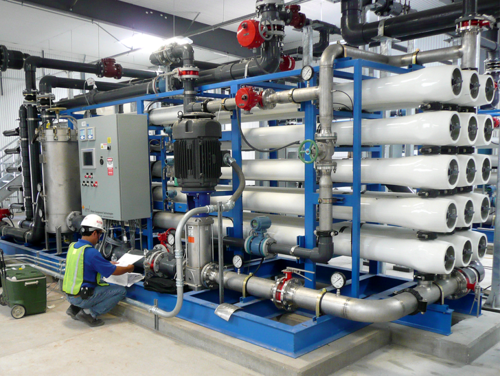The Challenges of M270 Waste Management for Environmental Cleanup
Ingenious PFAS Therapy Solutions for Safer Water
The raising prevalence of PFAS contamination in water materials necessitates a critical assessment of cutting-edge treatment solutions. Advanced filtering technologies and novel chemical treatments present appealing avenues for minimizing these persistent toxins. Additionally, emerging bioremediation methods use a more lasting method to tackling PFAS challenges. As governing frameworks continue to adjust, understanding the effectiveness and scalability of these options comes to be critical. What ramifications do these developments hold for public health and ecological reconstruction, and how can stakeholders efficiently apply them in varied contexts?
Overview of PFAS Contamination
PFAS contamination has actually become a considerable environmental and public health issue. Per- and polyfluoroalkyl materials (PFAS) are a group of artificial chemicals known for their persistence in the setting and body, leading them to be frequently referred to as "forever chemicals." These compounds have actually been commonly utilized in different markets, consisting of firefighting foams, water-repellent materials, and food product packaging, mainly as a result of their water- and grease-resistant properties.
The extensive use PFAS has resulted in their discovery in soil, water supplies, and also in the blood of humans and animals. Research studies have connected PFAS direct exposure to countless health and wellness issues, including developmental impacts in infants, body immune system dysfunction, and different types of cancer cells. Additionally, the environmental persistence of these substances complicates their degradation and elimination, raising problems about lasting eco-friendly impacts.
Regulatory bodies are increasingly carrying out stringent guidelines to monitor and decrease PFAS degrees in alcohol consumption water and various other environmental mediums. As understanding of PFAS contamination grows, it has actually ended up being imperative for communities and sectors to look for efficient therapy solutions to minimize exposure and guard public wellness.
Advanced Filtering Technologies
As the urgency to deal with PFAS contamination heightens, advanced filtering technologies have become an essential component in the removal initiatives targeted at getting rid of these consistent chemicals from water sources. These technologies leverage advanced mechanisms to successfully target and catch PFAS substances, which are notoriously resistant to conventional treatment methods.
Among one of the most promising techniques is the usage of granular activated carbon (GAC), which adsorbs PFAS particles as a result of its high surface and permeable framework. This technique has been widely carried out in both municipal and industrial settings, demonstrating significant reductions in PFAS concentrations. Furthermore, ion exchange resins have obtained grip, especially designed to precisely bind PFAS ions from water, therefore promoting their removal.
Membrane layer filtering innovations, such as reverse osmosis and nanofiltration, likewise show efficiency in PFAS removal by literally dividing impurities from water - pfas management. These systems can achieve high levels of purity, making them appropriate for drinking water applications
Chemical Therapy Technologies
Various chemical treatment innovations are being discovered to effectively deal with PFAS contamination in water materials. One promising strategy entails using innovative oxidation procedures (AOPs), which make use of powerful oxidants such as ozone, hydrogen peroxide, or chlorine dioxide integrated with UV light to break down PFAS compounds right into much less dangerous substances. This method has shown efficiency in lab settings, revealing potential for scalability in real-world applications.
One more innovative approach is the advancement of ion-exchange materials specifically developed to target PFAS. These materials can precisely adsorb PFAS compounds from water, enabling for their elimination during therapy procedures. Current improvements have actually enhanced the performance and ability of these resins, making them a favorable alternative for water therapy facilities.
Furthermore, researchers are investigating making use of chemical agents like persulfate and ferrous ions to improve the destruction of PFAS in infected water. These agents can cause chain reaction that facilitate the malfunction of consistent PFAS substances.
Emerging Bioremediation Strategies
Recent developments in chemical therapy innovations have actually led the way for discovering bioremediation techniques as a sensible alternative for attending to PFAS contamination. Bioremediation utilizes the all-natural metabolic procedures of microbes to deteriorate or transform pollutants, making it an appealing method for taking on persistent pollutants like PFAS.
Arising techniques in bioremediation include the use of genetically crafted microorganisms that can particularly target and damage down PFAS compounds. These microbial stress are being established for their enhanced destruction abilities, boosting the effectiveness of the remediation procedure. Additionally, researchers are checking out the click this site possibility of plant-assisted bioremediation, where specific plant types might uptake and sequester PFAS from contaminated soil and water.
An additional promising method is the application of bioaugmentation, which includes presenting valuable microorganisms right into polluted atmospheres to improve the deterioration of PFAS. This approach can facilitate quicker removal timelines and improve overall efficiency.

Governing Frameworks and Requirements
A thorough regulative framework is necessary for efficiently taking care of PFAS contamination and ensuring public wellness defense. The raising acknowledgment of per- and polyfluoroalkyl compounds (PFAS) as environmental contaminants has actually prompted numerous federal and state agencies to develop criteria that govern their presence in water supplies. The United State Epa (EPA) has actually established health and wellness advisories and is pursuing setting enforceable limitations for PFAS in drinking water.
State-level guidelines vary substantially, with some states adopting more stringent guidelines than those suggested by the EPA. These regulations usually include maximum pollutant levels (MCLs) for details PFAS compounds, monitoring needs, and reporting commitments for water energies. Furthermore, emerging structures concentrate on the remediation of infected sites, highlighting the site requirement for effective treatment innovations.

Conclusion
Finally, the development and execution of ingenious PFAS therapy remedies are vital for resolving the pervasive issue of water contamination. Advanced filtration innovations, chemical treatments, and arising bioremediation strategies jointly provide a diverse approach to properly reduce and weaken PFAS levels. As governing structures continue to progress, incorporating these modern technologies will be necessary to safeguard public wellness and recover the integrity of polluted water sources, inevitably adding to a cleaner and much safer atmosphere.